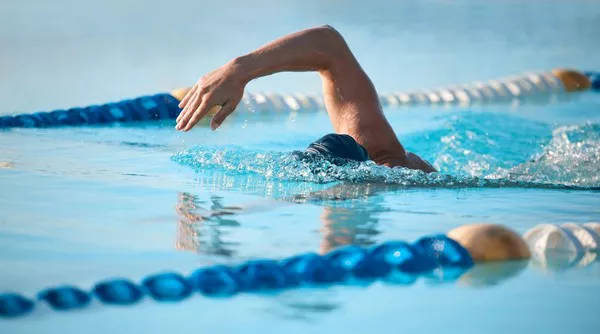Swimming is not only an enjoyable recreational activity but also a highly beneficial form of exercise. Whether you’re a casual swimmer or a competitive athlete, proper equipment can enhance your swimming experience. Among the essential gear for swimmers, a nose clip plays a vital role in ensuring comfort, hygiene, and optimal performance in the water. In this article, we’ll delve into the nuances of selecting, using, and maximizing the benefits of a swimming nose clip.
Choosing the Right Nose Clip
Before diving into the depths of swimming with a nose clip, it’s crucial to understand the various options available and how to pick the most suitable one for your needs.
1. Types of Nose Clips:
Nose clips come in different designs, each catering to specific preferences and requirements. The two main types are spring clips and adjustable clips. Spring clips, also known as clamshell clips, feature a spring mechanism that applies gentle pressure to keep the nostrils closed. On the other hand, adjustable clips allow for customization of fit by tightening or loosening the clip around the nose.
While spring clips offer convenience and ease of use, adjustable clips provide a more tailored fit, making them ideal for individuals with unique nasal shapes or those who prefer a customizable experience.
2. Material and Size:
Opting for a nose clip made from hypoallergenic materials is paramount to prevent skin irritation or allergic reactions, especially for individuals with sensitive skin. Common materials include silicone, rubber, and plastic. Silicone is favored for its softness, flexibility, and resistance to degradation from chlorine exposure.
When it comes to size, choosing the right fit is essential for comfort and effectiveness. A nose clip that is too small may pinch the nostrils uncomfortably, while one that is too large may slip off during swimming. Most nose clips come in standard sizes, but adjustable clips offer the flexibility to achieve a snug fit regardless of nasal shape or size.
3. Specific Needs:
Depending on your swimming activity or purpose, you may require a specialized nose clip. For synchronized swimming, where precise movements and coordination are crucial, opting for a low-profile, streamlined nose clip can minimize drag and enhance performance. Competitive swimmers may prefer lightweight, durable nose clips that offer minimal interference while providing maximum functionality.
Consider factors such as water resistance, ease of adjustment, and overall comfort when selecting a nose clip tailored to your specific needs.
Using a Nose Clip
Now that you’ve selected the perfect nose clip, let’s explore the proper technique for wearing and utilizing it effectively in the water.
1. Step-by-Step Instructions:
- Start by holding the nose clip with your dominant hand, ensuring the pads are facing inward.
- Gently place the pads over your nostrils, positioning them securely but not too tightly.
- Use your other hand to press the sides of the clip together until you feel a snug fit.
- Adjust the clip as needed to achieve a comfortable seal without causing discomfort or impeding blood circulation.
- Once properly positioned, test the seal by exhaling gently through your nose to ensure no air escapes.
2. Tips for a Comfortable Fit:
- Avoid over-tightening the nose clip, as this can lead to discomfort and skin irritation.
- If you experience any pain or discomfort while wearing the nose clip, readjust or try a different size or type.
- Rinse the nose clip with clean water after each use to remove chlorine or salt residue and prolong its lifespan.
3. Breathing Techniques:
- Practice breathing through your mouth while swimming to compensate for the restricted airflow through your nose.
- Focus on maintaining a steady rhythm of inhalation and exhalation to prevent breath-holding or shallow breathing.
Benefits and Considerations
Using a nose clip offers numerous benefits for swimmers of all levels, but it’s essential to weigh these advantages against potential drawbacks and consider alternative options.
1. Benefits of Using a Nose Clip:
- Prevents water from entering the nostrils, reducing the risk of sinus infections and discomfort.
- Enhances buoyancy and hydrodynamics by minimizing drag and resistance in the water.
- Allows swimmers to focus on technique and performance without the distraction of water entering the nose.
2. Potential Drawbacks:
- Some users may find nose clips uncomfortable or restrictive, especially if they’re not accustomed to wearing them.
- Breathing through the mouth may feel unnatural for some individuals and require practice to master.
- Prolonged use of nose clips may lead to dependency, making it challenging to swim without them.
Alternatives to Nose Clips:
- Nose plugs offer a similar function to nose clips but may provide a more secure seal for individuals with larger nostrils or those prone to water leakage.
- For short distances or casual swimming, simply holding your breath while underwater may suffice as an alternative to using a nose clip or plug.
Additional Tips:
- Experiment with different nose clip styles and sizes to find the perfect fit for your comfort and performance needs.
- Incorporate nose clip usage into your swimming routine gradually to allow your body to adapt to the sensation and breathing adjustments.
- Practice proper breathing techniques both with and without a nose clip to maintain versatility and adaptability in various swimming conditions.
Conclusion
In conclusion, mastering the art of swimming involves not only refining your strokes and techniques but also equipping yourself with the right gear to optimize your performance and comfort in the water. By choosing the appropriate nose clip, mastering its usage, and understanding its benefits and considerations, you can elevate your swimming experience and unlock your full aquatic potential. Dive in, breathe easy, and enjoy the blissful serenity of swimming with confidence and ease.

